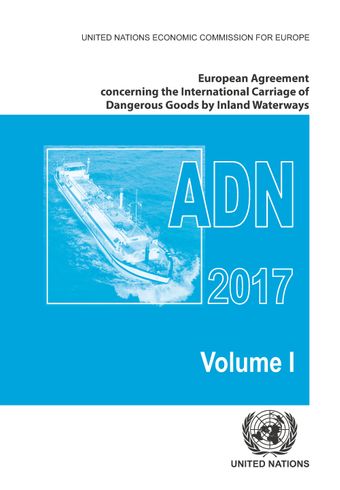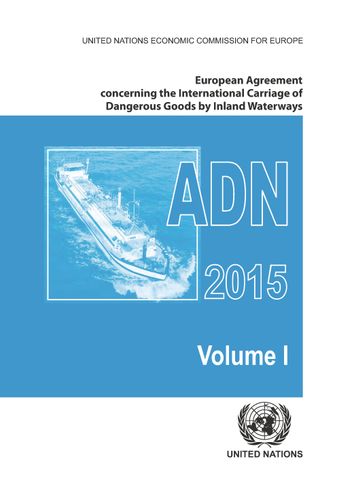- Inicio
- Publicaciones de A-Z
- European Agreement Concerning the International Carriage of Dangerous Goods by Inland Waterways (ADN)
European Agreement Concerning the International Carriage of Dangerous Goods by Inland Waterways (ADN)
Filter :
Sustainable Development Goals
Tema
Publication date

European Agreement Concerning the International Carriage of Dangerous Goods by Inland Waterways (ADN) 2023
Applicable as from 1 January 2023
The European Agreement concerning the International Carriage of Dangerous Goods by Inland Waterways (ADN) done at Geneva on 26 May 2000 under the auspices of the United Nations Economic Commission for Europe (UNECE) and the Central Commission for Navigation on the Rhine (CCNR) has been in force since February 2008. The Regulations annexed to the ADN contain provisions concerning dangerous substances and articles their carriage in packages and in bulk on board inland navigation vessels or tank vessels as well as provisions concerning the construction and operation of such vessels. They also address requirements and procedures for inspections the issue of certificates of approval recognition of classification societies monitoring and training and examination of experts. They are harmonized to the greatest possible extent with the dangerous goods agreements for other modes of transport.

European Agreement Concerning the International Carriage of Dangerous Goods by Inland Waterways (ADN) 2021
Applicable as from 1 January 2021
The European Agreement concerning the International Carriage of Dangerous Goods by Inland Waterways (ADN) done at Geneva on 26 May 2000 under the auspices of the United Nations Economic Commission for Europe (UNECE) and the Central Commission for Navigation on the Rhine (CCNR) has been in force since February 2008. This version has been prepared on the basis of amendments applicable as from 1 January 2021. The Regulations annexed to the ADN contain provisions concerning dangerous substances and articles their carriage in packages and in bulk on board inland navigation vessels or tank vessels as well as provisions concerning the construction and operation of such vessels. They also address requirements and procedures for inspections the issue of certificates of approval recognition of classification societies monitoring and training and examination of experts. They are harmonized to the greatest possible extent with the dangerous goods agreements for other modes of transport.

European Agreement Concerning the International Carriage of Dangerous Goods by Inland Waterways (ADN) 2019
Applicable as from 1 January 2019

European Agreement Concerning the International Carriage of Dangerous Goods by Inland Waterways (ADN) 2017
Applicable as from 1 January 2017

European Agreement Concerning the International Carriage of Dangerous Goods by Inland Waterways (ADN) 2015
Applicable as from 1 January 2015

